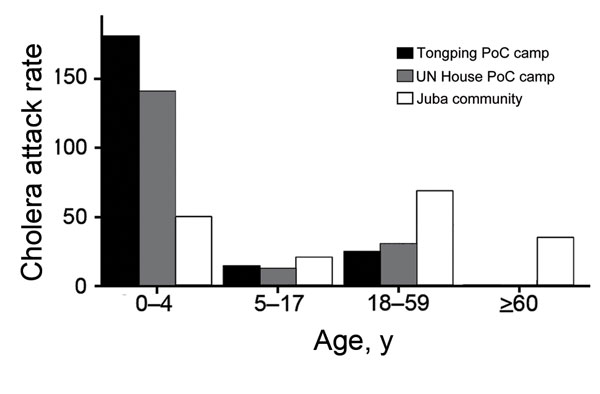Volume 22, Number 6—June 2016
Dispatch
Population-Level Effect of Cholera Vaccine on Displaced Populations, South Sudan, 2014
Figure 1

Figure 1. Estimated age-specific cholera attack rates (per 100,000 population) at different locations in Juba, South Sudan, 2014. PoC, protection of civilians; UN, United Nations.
Page created: May 16, 2016
Page updated: May 16, 2016
Page reviewed: May 16, 2016
The conclusions, findings, and opinions expressed by authors contributing to this journal do not necessarily reflect the official position of the U.S. Department of Health and Human Services, the Public Health Service, the Centers for Disease Control and Prevention, or the authors' affiliated institutions. Use of trade names is for identification only and does not imply endorsement by any of the groups named above.